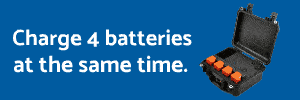The distinction between Part 107 and hobbyist seems to all come down to registering.
From the FAA's website:
"There are two ways for recreational or hobby UAS fliers to operate in the National Airspace System in accordance with the law and/or FAA regulations. Each of the two options has specific requirements that the UAS operator must follow. The decision as to which option to follow is up to the individual operator.
Option #1. Fly in accordance with the Special Rule for Model Aircraft (Public Law 112-95 Section 336). Under this rule, operators must:
- Fly for hobby or recreational purposes only
- Follow a community-based set of safety guidelines
- Fly the UAS within visual line-of-sight
- Give way to manned aircraft
- Provide prior notification to the airport and air traffic control tower, if one is present, when flying within 5 miles of an airport
- Fly UAS that weigh no more than 55 lbs. unless certified by a community-based organization
Option #2. Fly under the FAA's Small UAS Rule (14 CFR part 107). Under this rule, operators must:
- Register their UAS with the FAA as a "non-modeler"
- Obtain an FAA Remote Pilot Certificate
- Follow the operational requirements (PDF) of Part 107"
The FAA states that a model aircraft flyer does not need to register the aircraft up to 55 pounds if one is going to fly it within model aircraft rules:
Fly for Fun under the Special Rule for Model Aircraft
So as far as the hobbyist is concerned, since that person will never fly outside the boundaries of the rules then no registration is needed and no waivers/authorizations will ever need to be applied for, and drones are classified by the FAA as recreational or hobby aircraft in that case.
Once the aircraft is registered, it then falls into the "Part 107" category, which comes with the same set of rules. Those flying under the registered, or Part 107, agreed to a set of terms and rules required by the FAA during registration, certified or not. The only distinction between them is that certified pilots can be compensated in any form while non certified pilots cannot. Compensation could be any form of payment, from a candy bar to a million dollars to getting income from a video on Youtube.
Common sense comparisons between FAA flight rules:
Would any of us X-Star pilots, certified or not, fly our pumpkin over a college or NFL stadium packed with people during the middle of a football game just for fun without a waiver? Of course not. We all know how stupid that would be because we would never get away with it. That would mean instant DHS, SWAT teams, FBI, national news coverage, arrest, scandal and embarrassment, because there are so many people who would witness the event. Flying over groups of people is one of the FAA no-nos we all agreed to during registration along with the no-nos flying beyond VLOS, or over 400 feet AGL, or at night, or above a ceiling of cloud cover, etc., yet I think we have all seen examples of flyers proudly displaying results of flying one of the latter examples, maybe even going viral and getting tons of hits on Youtube leading to even compensation. It must be something like when we drive our cars. Out in the middle of nowhere we might be able to get away with driving 50 miles per hour over the speed limit, but in busy traffic that would be highly risky. Like the FAA though, there could be a trooper out there in the middle of nowhere hiding behind a bush just waiting, or an FAA investigator sifting through the Youtube videos checking for waivers and certifications...
So in short, yes, anyone who has registered one's drone must still apply for a waiver/authorization. Hobbyists agree never to fly beyond the rules and don't even need to register. I just assume those who are talking about flying a mile or four miles have gotten their waivers. To do so without a waiver would mean the registered pilot lied about following the terms of the agreement.






